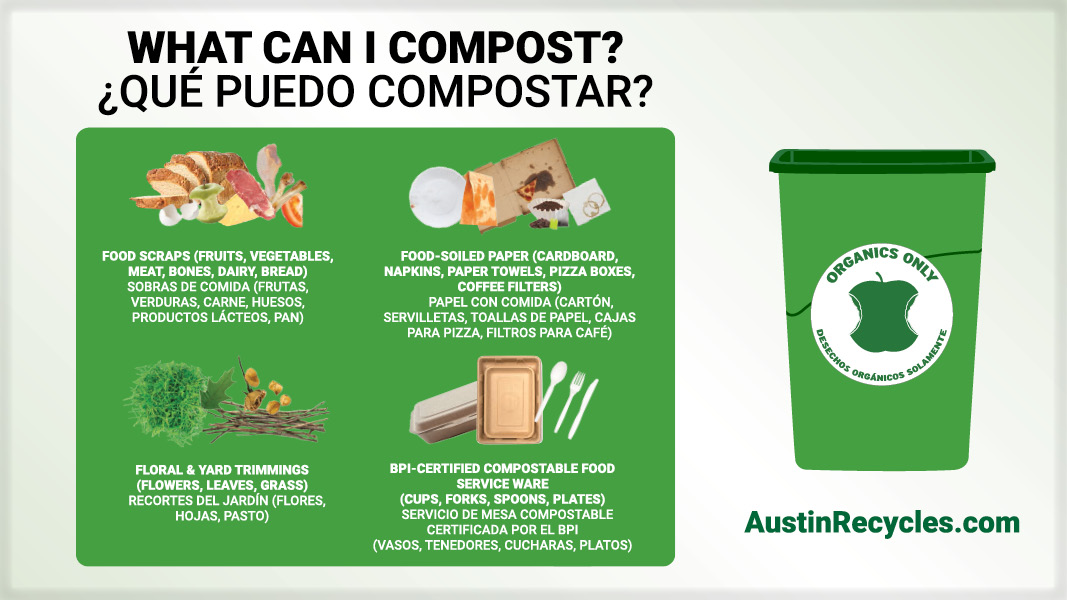Top: Downloadable sample social media posts, mailers, stickers, and guidelines are included in the Blueprint. Image courtesy city of Austin, Texas
The Composting Consortium, a collaboration managed by the Center for the Circular Economy at Closed Loop Partners, collaborated with Eco-Cycle to coauthor the Municipal Blueprint for Composting. Released in early August, the Blueprint is crafted to educate and support municipalities in developing and scaling food scraps collection programs and composting infrastructure in their cities and jurisdictions. “Municipalities are a critical stakeholder when building the necessary compost infrastructure and promoting the behavior changes needed for a thriving circular economy for food scraps, particularly for complex organic streams that include post-consumer source separated organics,” explains the Introduction. “This Blueprint explores key considerations and provides resources, tools and guidance for municipalities looking to establish organics recycling collection programs in their communities and jurisdictions.”
The Blueprint is divided into four chapters that cover: Navigating policy as a driver for change, e.g., adopting local ordinances and zoning to enable program development; Scaling collection and infrastructure programmatic options following best practices; Developing contracts with service providers for collection or processing that set a program up for success; and Communications and engagement strategies to motivate residents to participate and minimize contamination.
How municipal organics program evolve is mapped out in the introduction of the Blueprint. It launches with curbside leaf collection followed by backyard composting assistance, then segues into food scraps drop-off followed by a food scraps curbside collection pilot then a full-scale program. The last element, according to this evolution scenario, is contamination control. To get started, municipal leadership buy-in is “paramount,” as is funding. “Draft a memo outlining your vision, impact, timelines, staffing needs and an operational plan including all capital and operational requests,” explain the authors. “Be clear on your program vision, impact and plan to fund this new project, including the why, the how and the potential return on investment.” Selling points to use in the process — the “Elevator Pitch for an Organics Program” — include creation of local green jobs, effective climate change solutions, local resiliency to drought and flooding, agricultural benefits, and prolonged landfill life.
The blueprint gets into detail about use of ordinances for organics program implementation and includes many how-to tips and several case studies. The chapter on developing contracts with outside vendors offers insights on how to optimize the language included in the contract for the best vendor relationships and stable programming. Key considerations are the logistical roles and responsibilities between the vendor and the municipality, including who applies for and manages the permitting, facility ownership, and site management. The final chapter covers communications and marketing materials — including downloadable sample social media posts, mailers, stickers, and guidelines. “By following this comprehensive, multi-pronged Blueprint, municipalities can establish effective organics recycling programs that divert organic materials from landfills, reduce greenhouse gas emissions, and create a more circular economy for their citizens and communities,” note the authors.













